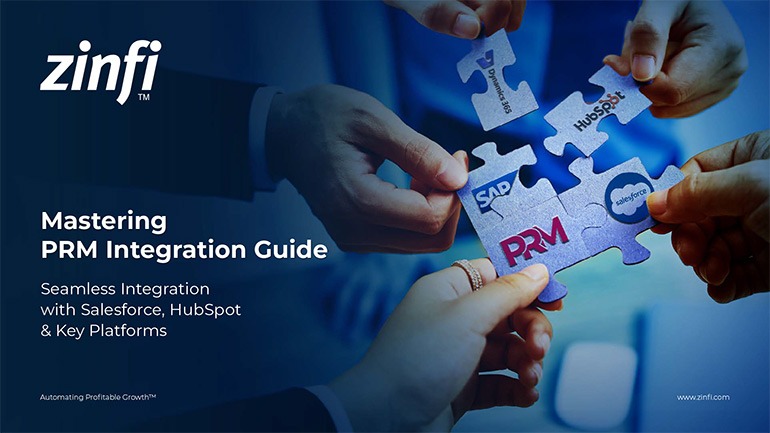Glossary - How to - Channel Partner Management Strategies
How to Implement Effective Channel Partner Management Strategies?
Introduction
Organizations in the competitive business landscape rely on channel partners to expand their reach, enhance sales, and deliver superior customer service. Channel partner management strategies refer to the methodologies and best practices businesses implement to optimize their relationships with resellers, distributors, and other third-party partners. A well-structured channel partner strategy ensures seamless collaboration, effective communication, and mutual profitability.
From selecting the right partners to providing ongoing training and incentives, channel partner management plays a crucial role in partner relationship management (PRM). Effective strategies lead to increased revenue, streamlined operations, and better alignment between the company’s goals and partner efforts. Businesses can enhance partner engagement, track performance, and drive long-term success by leveraging PRM automation.
Key Takeaways:
Selecting the Right Channel Partners
The foundation of a successful channel partner management strategy is choosing the right partners. Not all potential partners align with your business goals, so organizations must conduct thorough assessments before onboarding.
- Define clear selection criteria, such as industry expertise, market reach, and financial stability.
- Evaluate potential partners’ existing customer base and brand reputation.
- Conduct a due diligence process, including reference checks and financial audits.
- Utilize PRM software to maintain a database of potential and existing partners, ensuring strategic alignment.
Implementing an Effective Onboarding Process
Once you have selected the right partners, a structured onboarding process is critical to ensure long-term success.
- Provide comprehensive training programs, including product knowledge, sales techniques, and compliance guidelines.
- Offer digital resources such as e-learning modules, video tutorials, and documentation.
- Set up a centralized partner portal for access to essential information and tools.
- Assign dedicated channel managers to assist partners with their initial steps and early challenges.
Strengthening Partner Engagement and Communication
Maintaining strong relationships with channel partners requires ongoing engagement and open communication.
- Utilize PRM platforms to facilitate seamless communication and collaboration.
- Schedule regular check-ins and performance reviews with partners.
- Provide real-time updates on product changes, market trends, and business objectives.
- Establish a feedback loop where partners can voice concerns and suggest improvements.
Incentivizing Performance Through Rewards and Recognition
Motivating channel partners is essential for maintaining productivity and commitment.
- Implement tiered incentive programs based on performance metrics such as sales volume and customer satisfaction.
- Offer financial rewards, rebates, and exclusive benefits to high-performing partners.
- Recognize top contributors through awards, special events, and public acknowledgment.
- Provide marketing development funds (MDF) to help partners run localized campaigns.
Measuring and Optimizing Channel Partner Performance
Tracking and analyzing partner performance is essential for continuous improvement.
- Set key performance indicators (KPIs) such as revenue contribution, deal closure rates, and customer satisfaction scores.
- Use PRM dashboards to generate reports and monitor progress.
- Identify underperforming partners and provide targeted support or training.
- Continuously refine strategies based on data insights and industry trends.
Summary of Key Takeaways:
- Selecting the Right Partners: Choose partners aligned with business goals.
- Effective Onboarding: Provide structured training and resources.
- Engagement and Communication: Utilize PRM tools for collaboration.
- Incentivization: Implement rewards and recognition programs.
- Performance Optimization: Monitor and adjust strategies based on data.
Industry-Specific Examples:
- Automotive Manufacturing: Manufacturers rely on dealership networks and suppliers. Effective channel partner management ensures seamless supply chain operations and brand consistency.
- Consumer Electronics: Retailers and e-commerce platforms require well-structured channel partner strategies to manage inventory, marketing, and customer support.
- Energy Production: Energy companies collaborate with suppliers and distributors. Effective partner management helps in regulatory compliance and technological advancements.
- Financial Services: Banks and insurance firms work with independent brokers and agencies, making partner engagement and performance tracking crucial.
- Food and Beverage: Distributors and wholesalers play a significant role in supply chain efficiency, requiring strong partner management practices.
- Healthcare Services: Medical device companies and pharmaceutical firms collaborate with hospitals and clinics, emphasizing regulatory adherence and training.
- Information Technology: IT companies depend on value-added resellers (VARs) and managed service providers (MSPs), making PRM automation essential for scalability.
- Pharmaceutical Development: Pharma firms partner with research institutions and distribution networks to ensure compliance and streamlined supply chain processes.
- Retail Industry: Retail brands work with franchisees and suppliers to maintain product consistency, customer service quality, and sales growth.
- Telecommunications: Telecom providers collaborate with resellers and service operators, requiring structured incentives and performance-tracking systems.
Conclusion:
Implementing robust channel partner management strategies is critical for business growth and sustainability. Businesses can achieve long-term success by carefully selecting partners, providing structured onboarding, engaging regularly, incentivizing performance, and continuously optimizing operations. PRM software and automation further streamline these efforts, making partner management more efficient and scalable.
Associated Keywords:
- Best Practices for Channel Partner Management
- How to Engage Channel Partners
- Partner Relationship Management Strategies















